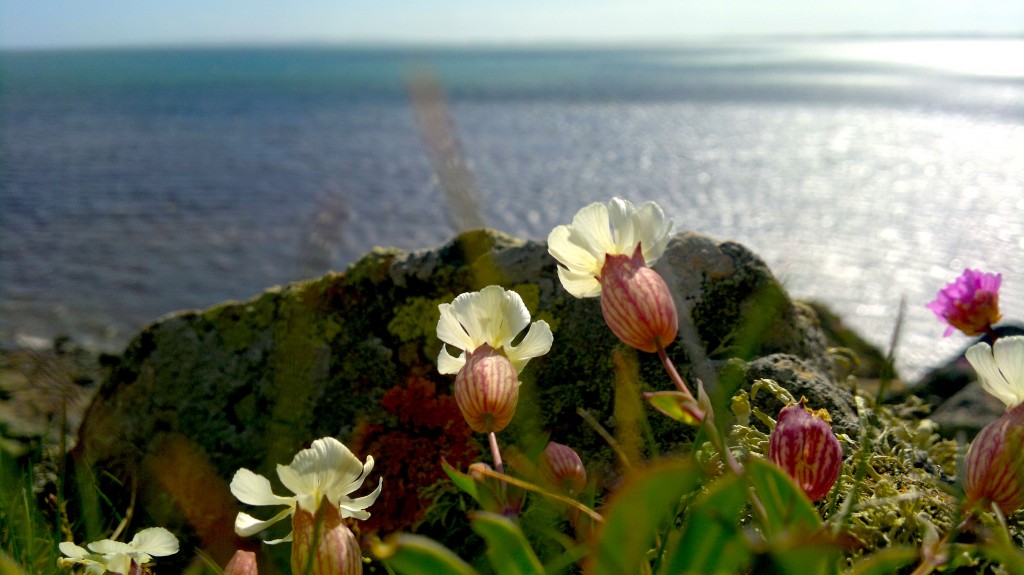Sea campion – Edibility, Identification, Distribution
Silene maritima
- Edibility – 2/5 leaves, 4/5 flowers
- Identification – 4/5 – Pretty much unmistakable when in flower. Only similar species is bladder campion (Silene vulgaris), the inland version of this plant, which is equally edible, and much sought after in Spain and Cyprus. The common hedgerow and woodland relation red campion (Silene dioica) is not recommended, beyond perhaps afew of its flowers to prettify a salad.
- Habitat – Coastal cliffs and shingle foreshores around the UK
- Distribution – 4/5 – Common in its habitat in most areas
This adorable, delicate little flower clings tenaciously to sea cliffs, upper reaches of shingle beaches and the foreshore. The tips of the foliage have a unique sweet flavour, though with a somewhat bitter aftertaste in summer. The leaves contain saponins which are toxic but poorly absorbed by humans and so tend to pass through without causing harm. Saponins are found in many plants, including foods (such as beans), but its probably sensible to go easy with the leaves if you aren’t cooking them.
No such issues with the flowers which have a delicious hit of sweet nectar followed by an extraordinary fresh “mouth feel” which I can only describe as “pleasingly metallic” – two words that seldom go together!
Do give them a try – remembering to take only a few flowers from each plant. The flowers lend themselves very well to stuffing with other dainty wild treats…perhaps a wild garlic seed..?



3 Comments
Hi, thanks for the great post. Does sea campion contain compounds that are not found in Bladder campion, since it cannot be eaten raw? Or are the sources claiming you can eat Silene vulgaris raw mistaken?
Hi Tim, I recommend cooking both species if eating in any quantity. To quote PFAF on bladder campion (which I assume to be comparable to sea campion in terms of edibility): “Although i’ve seen no mention of toxicity for this species, it does contain saponins. Although toxic, these substances are very poorly absorbed by the body and so tend to pass through without causing harm. They are also broken down by thorough cooking. Saponins are found in many plants, including several that are often used for food, such as certain beans. It is advisable not to eat large quantities of food that contain saponins. Saponins are much more toxic to some creatures, such as fish, and hunting tribes have traditionally put large quantities of them in streams, lakes etc in order to stupefy or kill the fish”
As always, eat just a small amount and make sure the plant agrees with you. See also: http://www.gallowaywildfoods.com/the-day-i-ate-a-deadly-plant-the-spectrum-of-edibility/
Cheers
Mark
Great info, thank so you!
Tim